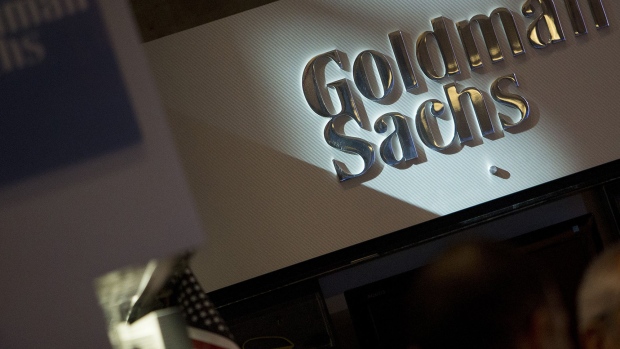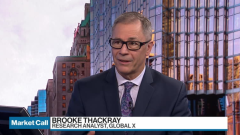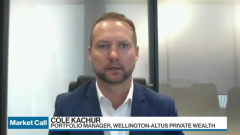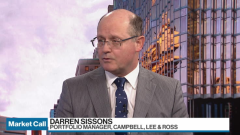Jan 17, 2023
High Costs Weigh Down Goldman, Morgan Stanley Amid Slump in Deals
, Bloomberg News

(Bloomberg) -- Wall Street investors are punishing Goldman Sachs Group Inc. for its identity crisis and rewarding Morgan Stanley for its clear strategy.
Goldman posted the second-biggest loss in the S&P 500 and its longtime rival was the second-biggest winner Tuesday.
That gain was thanks to Morgan Stanley doing what it’s been rebuilt to do: wealth management, where rising rates boosted net interest income, and the investment-banking business that fueled its profits for decades. Goldman, meanwhile, is struggling to tell its story after expenses surged and the firm backtracked from its foray into consumer banking.
“Simply said, our quarter was disappointing,” Goldman Sachs Chief Executive Officer David Solomon said during the firm’s fourth-quarter earnings conference call Tuesday. He called the results, which included a 16% jump in compensation costs, an “outlier.”
By contrast, Morgan Stanley’s view is “we are not heading into a dark period,” CEO James Gorman told investors. Investment banking and deals activity will pick up once the Federal Reserve pauses rate hikes, he said — “I will bet the year on that.”
Higher expenses and a plunge in dealmaking hobbled results for both of Wall Street’s premier investment banks.
Goldman’s shares slumped 6.4% in New York, the biggest drop in a year, after it reported that investment-banking fees tumbled by almost half during the last three months of 2022 from a year earlier. The backlog of new business shrank compared with the third quarter. At the same time costs jumped, driven by compensation, and the New York-based bank earmarked more funds to cover loans that might go sour. That left net income down 69% from a year earlier on a 16% drop in revenue, the company said in a statement.
Morgan Stanley also posted a steep drop in net income, down almost 40% from a year earlier on lower revenue, as non-interest expenses came in higher than expected and trading missed estimates. But overall results at the New York-based bank were higher than analysts expected, with particular strength in wealth management, where Morgan Stanley has benefited from higher net interest income as the Fed pushed up rates. The shares gained 5.9%, the biggest jump since Nov. 10.
Executives at Morgan Stanley have been preaching confidence heading into 2023 in the hopes that their business model will avoid getting caught up in any consumer-market strain, while a rebound in asset prices and capital-markets activity would prove a boon for the firm.
“We have seen a healthy start to the year,” Chief Financial Officer Sharon Yeshaya said in an interview. “A lot of it hinges on the economic outlook and whether we have seen a peak in inflation and a policy pivot.”
The bank has been mindful of cost pressures. In December, it started a fresh round of job cuts that affected about 1,600 employees, or roughly 2% of its total workforce. While the move represents a much smaller action than at Goldman, it serves as another indicator of Wall Street’s cautious outlook as a possible US recession looms.
Morgan Stanley continues to monitor its expenses and headcount, Gorman said, and it’s been “overdue” for right-sizing the workforce because it hasn’t done much to pull back over a couple of years. That’s no different from peers that are also re-setting compensation packages and streamlining the staff to bring down costs, he said.
“Widely expected to be awful, Goldman Sachs’ Q4 results were even more miserable than anticipated,” said Octavio Marenzi, the chief executive at Opimas. “The real problem lies in the fact that operating expenses shot up 11%, while revenues tumbled. This strongly suggests more cost cutting and layoffs are going to come.”
“Morgan Stanley, on the other hand, had results very much in line with expectations, with weakness in investment banking, but stable elsewhere,” Marenzi said.
The divergence between the two firms is also evident in their market capitalizations. When Solomon took over in 2018, Goldman Sachs’s market value was about $88 billion, compared with $81 billion for Morgan Stanley. Goldman’s has since climbed to $124 billion, but its rival has surged to $164 billion.
Goldman’s Outlook
Goldman’s fourth-quarter compensation costs rose 16% from a year earlier, though that gauge dropped on a full-year basis. That indicates the bank’s leadership was too conservative with its compensation set-aside in the first nine months of 2022. Managers will still have to deliver a tough bonus message to its bankers and traders this week.
Looking forward, there aren’t many signs of widespread distress, but the year remains “uncertain,” and customers want to see more stability before committing to long-term plans and growth, Solomon said.
The investment-banking giant has also poured billions of dollars into its retail effort, which includes the Apple Card and specialty-lending platform GreenSky. That operation has posted $3.8 billion in pretax losses over the past three years.
--With assistance from Max Abelson and Sonali Basak.
(Updates with closing share prices starting in second paragraph.)
©2023 Bloomberg L.P.






